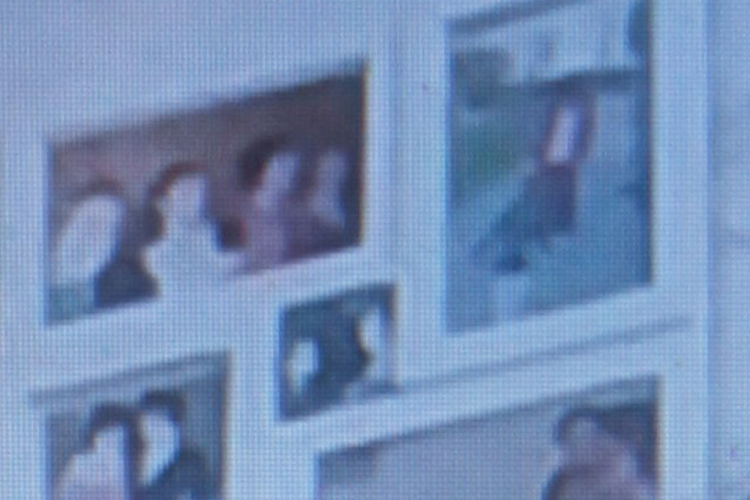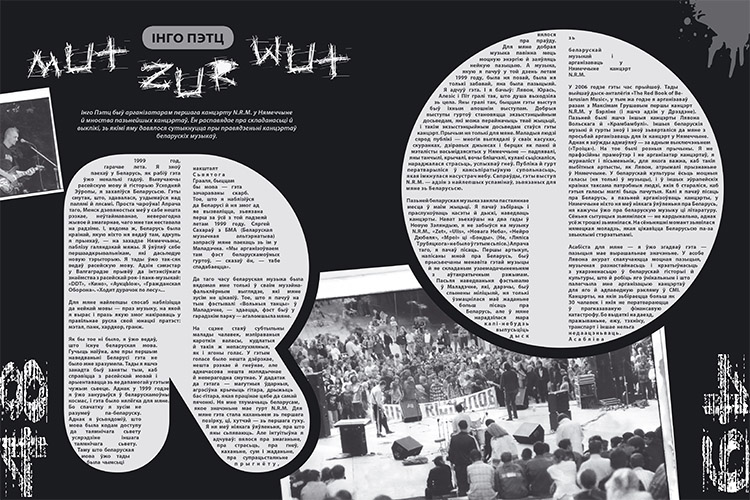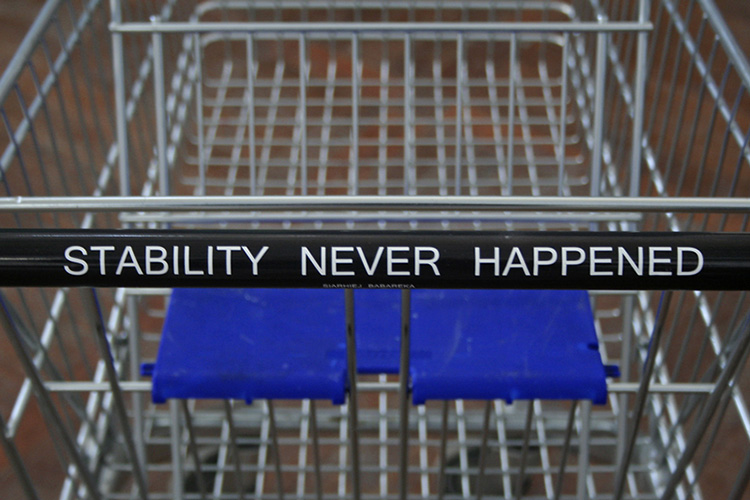
Аўтар: Volha Bubić, 23/10/2015 | ART Cult Aktivist discussion
BELARUSIAN PHOTOGRAPHY IS ALL RIGHT!
On October 15, 2015 as a part of the second «Month of Photography in Minsk» a round table was held dedicated to the issues of photographic field economy. The photographers from Belarus, Russia, Ukraine and Poland took part in the discussion which turned out to be rather versatile: the problems touched upon ranged from the importance and the role of institutions in the development of photography and photographers’ survival strategies on the market of magazines to the Internet and photo books functions. This educational event was held in collaboration with a major project of «Belgasprombank» — an exhibition and sale of the works made by young Belarusian artists «Salon d’Automne» («Autumn Salon»).
And thus it seems natural to compare contemporary photography, the discussion participants were reflecting on with the art that in fact was at arm’s length from them.
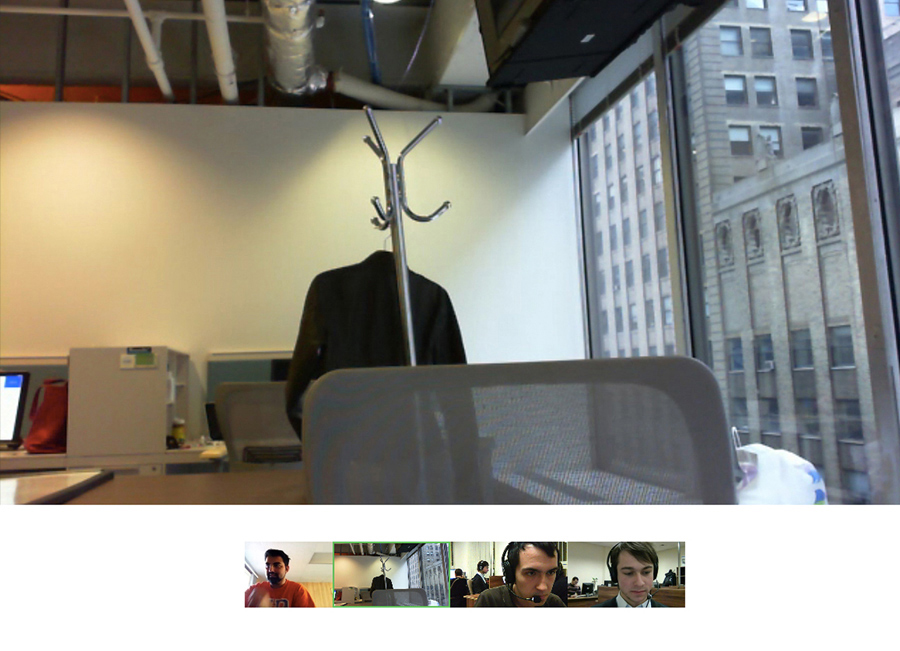
Maksim Saryčau. Man-month project
Growing popularity of photography in the world today is obvious. Not only active users of social networks and instagram enjoy this affordable and high-quality media. Even in Belarus photography has already gone beyond the immediate scope of photojournalists’ professional duties and bravely marches into museum halls and galleries. Those who choose it as a tool of their artistic expression, have become serious competitiors to people from the Academy of Arts, who continue to ignore the fact of the transformation of the social and cultural paradigm and keep producing landscapes and still lives far from what is recognized as truly «contemporary» and really «art» all over the globe. But Belarusian photography is showing quite a different picture.
There is a number of reasons that allow us to describe the Belarusian photography as topical and contemporary. One of them lies in the democratic character of the medium itself. Photography really is the easiest and most affordable tool, which thus best reflects the postmodern philosophy postulates according to which simplicity and speed characteristic of the image production process in the XXI century literally allow the photographer to focus his/her efforts not on the creating of a body of art but on the thought, the idea that underlies it. Instead of hard work in making over millions of technically perfect brushstrokes the photographer is engaged into reasoning about what, how and why (s)he will photograph. It is no exaggeration to say that with such an approach the author’s thought comes to the forefront, and not a technique (technology) of the performance.
And it is by focusing on the depth and originality of the visual material that the audience will assess the work or the project presented to them.
The given thesis can be easily developed, if we sneak into a class where photographers are taught today. The curriculum will combine practical tasks, but a much greater emphasis is put on studying critical texts, the analysis of projects carried out by other authors, on comparing, asking questions and searching for answers. That is, on critical thinking development, rather than on bringing to perfection the production of endless mechanical jobs in copying the reality in its various forms: from a bouquet of flowers in the pot to a model posing nude. So in today’s world, photography appears to be a more «intelligent» medium than a traditional brush of a painter who has spent 5 years of his/her life learning to convey the depth and perspective, often forgetting what (s)he paints and why. Undoubtedly, technical skills are necessary, but to possess only them in the context of the fast changing world is not enough. First of all, we need to develop thinking skills, and if to compare the situations within the Belarusian field of photography and fine art today it is self-taught photographers who more often tend to possess them.
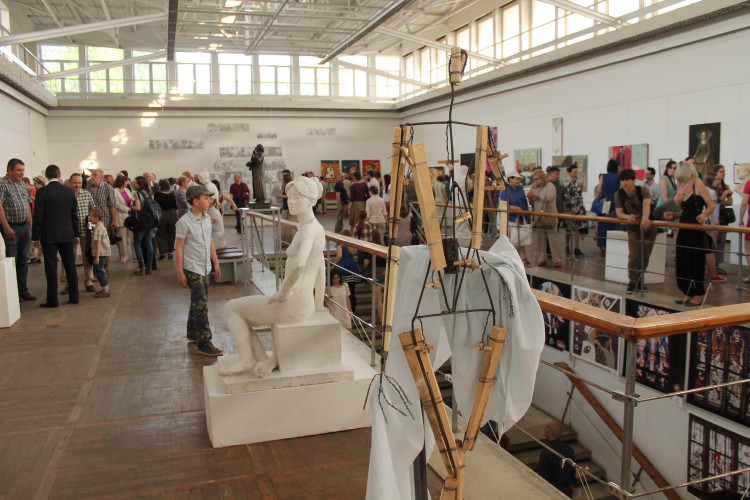
A fragment of the exhibition dedicated to the 70-years’ Anniversary of Belarusian Academy of Art. June 2015
Another reason that accounts for a higher level the Belarusian photography has reached, is surprisingly the specificity of our educational environment. The absence of an official state institution which would train specialists in photography in Belarus, has lead to the appearance of a number of private initiatives — short-term courses and almost amateur groups where people who are interested in the medium of photography could not only socialize but also to study and start developing their own projects. The examples of such courses are two groups of gradutes of a course headed by photographers and editors from «Russian Reporter» (with Julia Daraškevič as a course coordinator), Alexey Shinkarenko’s school at the Center of Photography, a course made by a Vitebsk photographer Alexander Veledzimovich. Or a workshop «Carpe Diem!» recently introduced by a photoreporter Sierhiej Balaj.
Thus, the absence of a rigid imposed system which actually does not meet the trends of the current times, has made photography an attractive flexible field for self-expression and self-realization, where each person can freely try his/her hand.
And — to be successful, because the third component of optimism in the Belarusian photography deals with possibilities of visual product presentation. .
In recent years, photography at first gradually and then at an increasing rate started to appear not only at alternative art platforms, but also inside public museums and galleries that are showing interest in cooperation with young photographers and artists. I should note that in saying this I mean not the exhibitions set by the amateurs of the realistic presentation of the beauty of the Belarusian nature or the compilation of hymns addressed to beloved women we still sometimes observe at the venues of last «strongholds» of realism position — at the Gallery «The Institute of Culture» and autonomous self-proclaimed galleries hosted by some institutions of higher education. The fact that some small museums show willingness in offering their halls causes optimism. Thus, in Piatrus Brouka Literary Museum Aliaksandra Saldatava’s photoproject «Double Refraction» was shown, and it is there now that we can see one of the «Month of Photography in Minsk» exhibitions. It is «Signatures of War», a project made by a special guest of the event – a photographer from Ukraine Arthur Bondar. The halls on the first floor of Maxim Bahdanovič’s Literary Museum became a platform for a series of «site-specific» interventions made within the exhibition «Everything What is Solid Melts into Air», set in the summer of 2015 in the framework of the project «ART-SOC-LAB». The exhibition thanks to which the museum space got a new topical meaning put together a number of projects where alongside with other means of concept’s expression there was photography (for example, in the projects made by Aliaksiej Navumčyk, Anton Sarokin and Antanina Slabodčykava). Zair Azgur Memorial Museum also shows readiness in collaborating with contemporary photographers: for example, my own photoexhibition «Somewhere and Here Again» was held there.
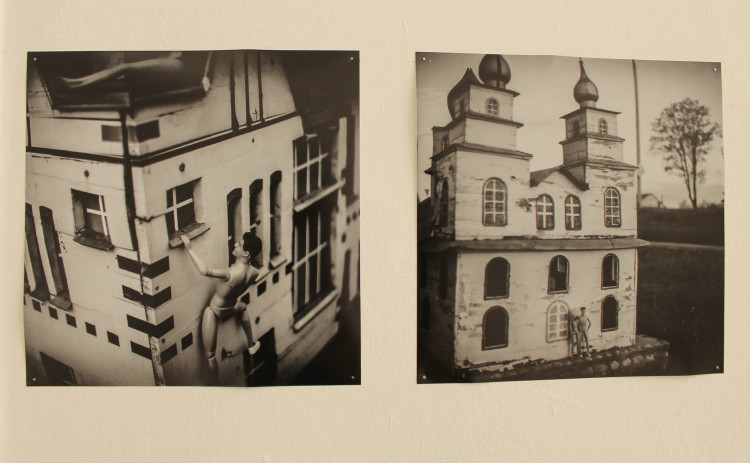
Taciana Lisouskaja. Dolce e vita project
Besides, already for the second time the Museum of Modern Fine Art becomes one of the active participants of the «Month of Photography in Minsk» where one of its employees, Anna Samarskaya, performs the role of photoexhibitions organizer. At its sites the spectators can enjoy both retrospective shows and solo projects made by Belarusian photographers (for example, by Aliaksiej Šlyk, Siarhiej Ždanovič). The Center for Contemporary Art has also become a frequent platform for personal and collective photo exhibitions. Certainly, the photo projects that happen to be shown in museums differ in performance levels, but we have not grounds to doubt possibilities for the presentation of photo product in the capital today. And probably the largest platform for dialogue with photography is «CECH», art space founded by the organizer of the project photography award «PRAFOTA» Julia Daraškevič.
Even before moving into a spacious hangar, many Minsk fans of photography started to associate «CECH» on Independence Avenue with a wide range of photo exhibitions that would enter the history of the Belarusian photography of the 2010s. For example, in February 2014 the collective exhibition «Process» showed the viewers what had been happening «behind the scenes» of work on personal projects of the first group of graduates of the course by Andrey Polikanov, Tatiana Plotnikova and Yuri Kozyrev. The whole process of ideas development, doubts and questions the authors faced while working on their project was brought in public space.
Photography was literally presneted as a «thinking matter», and the audience was allowed to appreciate and enjoy not only the outcome, but also the «process» of wandering and joy obtained by the insights the photographers had had.
The tradition of showing such critical photography was continued in the following exhibitions at «CECH», including the exhibition of «PRAFOTA» finalists organized in the framework of the first «Month of Photography in Minsk».
The award where a separate nomination «art» was introduced in addition to documentary photography has explicitly met the requirements of the cultural and historical context, and is undoubtedly naturally affects the further development of Belarusian photography. The appearance of the nomination «art photography» to some extent has further enhanced the place of photography in art sphere, its existence at the junction of two fields. It has also expanded the category of the authors who could participate in the contest, becoming, thanks to their victories, visible and recognized in creative environment. One of the major differences in the organizational procedures of «PRAFOTA» and those shows set under the patronage of the Academy of Art (including the current «Salon d’Automne») is the openness of the jury members list. Just like in the case of the press photography contest «Belarus Press Photo», on the contest website one can learn not only the names of the jury members and the chairperson, but also get to know their specializes in the field of photography, regalia and awards.
We should also note the level of global recognition of those who take part in the finalists’ selection, their professionalism casts no doubt. But what concerns, for example, the anonymous selection jury of «Salon d’Automne», we absolutely cannot arrive to the same conclusion.
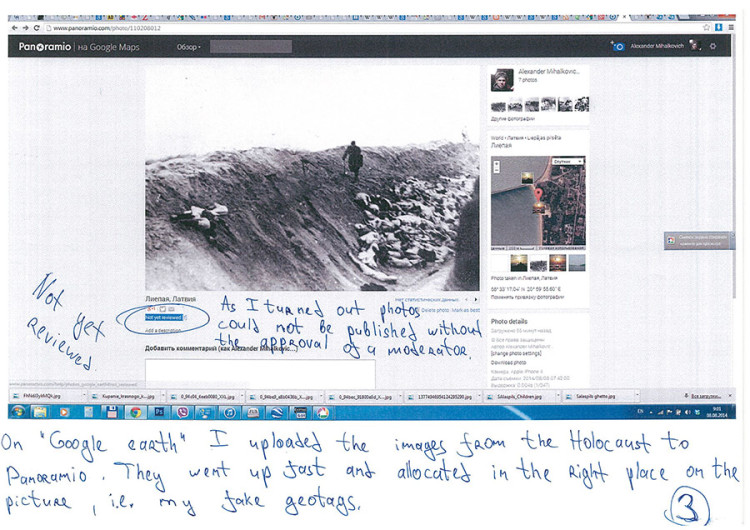
Alexander Mihalkovich. Forcing the internet to remember the holocaust project. The winner of PRAPHOTO 2014
Thus, observing the trends of contemporary photography and art in Belarus, we can summarize that Belarusian photography despite its seemingly peripheral position is all right. «Month of Photography in Minsk», «PRAFOTA», «CECH», «Belarus Press Photo» or modest museums of Belarusian writers and artists do not have big sponsors, but what is happening today with the medium of photography, thanks to the efforts invested by individual agents acting in the cultural field, within a historical perspective turns out to be much more important than loud statements about ratings and «best of the best» lists. Photography, both due to its ow nature and the way it harmoniously fits the creative space of Belarus, has now become a powerful alternative to conflictless uncritical tradition of fine arts, which someone is trying to pass off as «contemporary art».
Volha Bubič
Opinions of authors do not always reflect the views of pARTisan. If you note any errors, please contact us right away.



